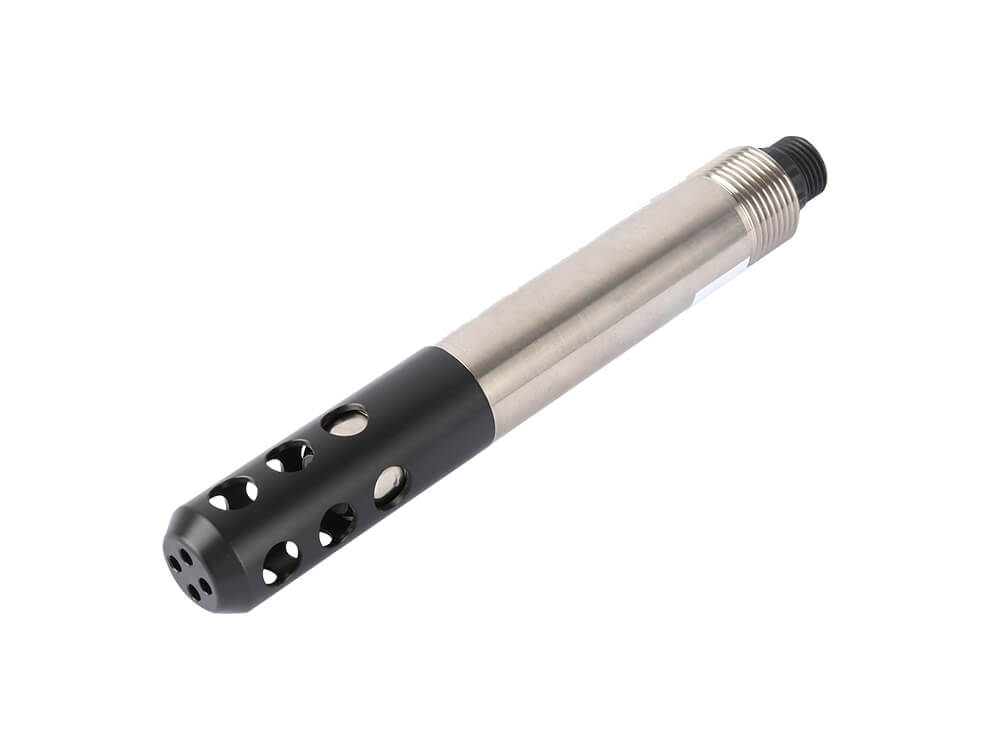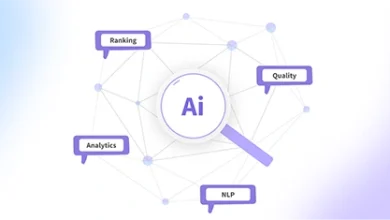Water quality is essential for the sustainability of life on Earth. From supporting aquatic ecosystems to providing clean water for drinking and industrial use, maintaining water health is crucial. One of the key indicators of water quality is dissolved oxygen (DO), the amount of oxygen available in water. Adequate dissolved oxygen levels are necessary for the survival of fish, plants, and microorganisms in aquatic environments. The presence of dissolved oxygen is a direct indicator of water’s ability to support life and function as a healthy ecosystem.
With the growing challenges posed by pollution, climate change, and overuse of water resources, ensuring the monitoring of DO levels is more important than ever. Enter dissolved oxygen sensors—a vital tool in the future of water quality monitoring. These sensors play a crucial role in providing real-time data, aiding environmental conservation, improving water treatment processes, and ensuring sustainable water management. In this blog, we will discuss the growing role of dissolved oxygen sensors in water quality monitoring, how they work, and their future potential in ensuring healthy water ecosystems worldwide.
What is Dissolved Oxygen and Why Does It Matter?
Dissolved oxygen (DO) is the oxygen that is found in water, absorbed through the atmosphere or produced by aquatic plants and algae during photosynthesis. It is essential for aerobic respiration in many aquatic organisms, including fish, crustaceans, and microbes. However, oxygen is not always present in sufficient amounts in all water bodies. Oxygen levels fluctuate due to various factors, including:
-
Temperature: Warmer water holds less oxygen, while cooler water holds more.
-
Water movement: Faster-moving water, such as rivers or streams, typically contains more oxygen than stagnant bodies of water.
-
Pollution: Organic pollutants can deplete oxygen as they decompose, leading to hypoxic (low-oxygen) or anoxic (no-oxygen) conditions.
-
Algal blooms: Excess nutrients can lead to algal blooms, which die off and decompose, consuming oxygen in the process.
Dissolved oxygen is crucial for aquatic life, and if DO levels drop too low, fish and other aquatic species may struggle to survive. This can lead to massive die-offs and disruptions in aquatic ecosystems. For example, hypoxia (a condition where oxygen levels fall below 2 mg/L) can result in a dead zone—an area where most marine life cannot survive. These events highlight the importance of monitoring DO levels in water bodies to prevent ecosystem damage and ensure aquatic life thrives.
How Dissolved Oxygen Sensors Work
Dissolved oxygen sensors are instruments used to measure the concentration of oxygen dissolved in water. They provide real-time data about oxygen levels and are vital for applications such as environmental monitoring, water treatment, and aquaculture. There are two primary types of dissolved oxygen sensors in use today:
1. Electrochemical Sensors (Clark-type Sensors)
The Clark-type sensor is the most widely used technology for measuring dissolved oxygen. It works based on electrochemical reactions. These sensors consist of a working electrode and a reference electrode that are separated by a semi-permeable membrane. When oxygen molecules diffuse through the membrane, they interact with the electrode and generate an electrical current. This current is directly proportional to the concentration of dissolved oxygen in the water.
Clark-type sensors are commonly used in both field and laboratory settings. While they provide accurate and reliable results, they do require regular maintenance, such as changing the membrane and cleaning the electrodes, to ensure accurate measurements.
2. Optical Sensors
Optical dissolved oxygen sensors operate on the principle of fluorescence. These sensors contain a special coating made of a fluorescent dye. When the sensor is exposed to light, the dye emits fluorescence. The presence of oxygen causes the fluorescence intensity to decrease, and the reduction in fluorescence is proportional to the amount of oxygen dissolved in the water.
Optical sensors have several advantages over electrochemical sensors, including low maintenance, longer lifespan, and resistance to fouling. Because of these benefits, optical sensors are becoming increasingly popular for continuous, long-term monitoring, especially in challenging or remote environments.
Applications of Dissolved Oxygen Sensors
Dissolved oxygen sensors have numerous applications across various sectors, contributing significantly to both environmental protection and resource management. Here are some of the most common applications:
1. Environmental Monitoring
The most prominent use of dissolved oxygen sensors is in the monitoring of aquatic ecosystems. Environmental agencies and researchers rely on do sensor to assess the health of rivers, lakes, estuaries, and coastal waters. By providing real-time data on oxygen levels, these sensors help identify early signs of hypoxia or eutrophication, allowing authorities to take action before the situation becomes critical.
In addition, continuous monitoring of DO levels in wetlands, oceans, and rivers helps track long-term trends in water quality, which is crucial for understanding the impacts of climate change, pollution, and land use changes on aquatic ecosystems.
2. Aquaculture and Fish Farming
Aquaculture, the practice of farming fish and other aquatic organisms, is a fast-growing industry that relies heavily on maintaining optimal water quality for its stock. Dissolved oxygen levels are vital for the health and growth of farmed species. Fish, shellfish, and other organisms need sufficient oxygen to thrive. If oxygen levels are too low, it can result in stunted growth, disease, or death, leading to significant economic losses.
In aquaculture systems, DO sensors are used to monitor oxygen levels continuously. By ensuring that oxygen levels remain within the ideal range, operators can reduce mortality rates, increase productivity, and improve the overall sustainability of the farm.
3. Wastewater Treatment
Dissolved oxygen is a key parameter in biological wastewater treatment. In treatment plants, oxygen is supplied to encourage the growth of aerobic bacteria that break down organic waste. The process requires a continuous supply of oxygen to maintain the bacteria’s activity. By monitoring DO levels in the aeration tanks, plant operators can adjust oxygen supply to optimize the efficiency of the treatment process.
Using DO sensors, operators can ensure that the treatment process is energy-efficient, reducing operating costs while improving treatment effectiveness. Sensors help optimize the aeration process, ensuring that enough oxygen is provided without wasting energy.
4. Industrial Applications
In industrial settings, dissolved oxygen sensors are used for a range of applications, including biotechnology, fermentation, and chemical processing. In fermentation processes used to produce biofuels, pharmaceuticals, and alcoholic beverages, maintaining the right oxygen levels is critical for maximizing yields. By accurately monitoring DO levels, manufacturers can optimize production conditions and ensure the success of fermentation-based processes.
Bioreactors, which are used in the production of biologically derived products, also rely on precise DO monitoring to ensure optimal growth conditions for microorganisms or cells.
The Future of Dissolved Oxygen Sensors
As global water scarcity and pollution continue to pose significant environmental challenges, the role of dissolved oxygen sensors in ensuring healthy water ecosystems is more important than ever. The future of water quality monitoring is leaning toward greater automation, connectivity, and real-time data integration, all of which will be powered by the continued development of dissolved oxygen sensors.
1. Smart Water Quality Management
The next generation of DO sensors will likely be integrated into smart water quality management systems. These systems will be able to collect, analyze, and transmit real-time data, enabling automated decision-making for water quality management. For instance, real-time data on DO levels from rivers, lakes, or aquaculture farms could trigger automated actions such as adjusting aeration, changing water flow rates, or reducing pollutant discharge based on predetermined thresholds.
2. Remote Monitoring and IoT Integration
With the rise of the Internet of Things (IoT), dissolved oxygen sensors will become even more connected, allowing for remote monitoring of water quality. Remote sensors could be deployed in remote or hard-to-reach water bodies, transmitting data to central monitoring systems. This would significantly improve the ability to monitor and manage water resources, especially in developing countries or areas with limited infrastructure.
3. Sustainability and Climate Change Monitoring
As climate change continues to affect global water resources, DO sensors will play a crucial role in tracking the impacts of rising temperatures on aquatic ecosystems. Warmer waters hold less oxygen, so monitoring DO levels will help detect early signs of thermal pollution, which could impact biodiversity and the viability of fish populations. These sensors could also be used to track and mitigate the effects of ocean acidification and other climate-related issues.
4. Integration with Artificial Intelligence (AI)
Artificial Intelligence and machine learning can enhance the capabilities of dissolved oxygen sensors. By analyzing historical data along with real-time readings, AI systems could predict future trends in water quality, identify patterns of oxygen depletion, and even recommend corrective actions before problems escalate. This predictive capability would improve the efficiency of water management and help authorities prevent environmental crises.
Conclusion
Dissolved oxygen sensors are essential tools for monitoring water quality, safeguarding aquatic ecosystems, and promoting sustainability in various industries. Their role in ensuring healthy oxygen levels in water bodies contributes to the preservation of biodiversity, the efficient operation of wastewater treatment systems, and the growth of aquaculture.
Looking forward, as technology advances, the future of dissolved oxygen sensors will likely be characterized by greater automation, remote monitoring capabilities, and integration with AI and IoT. These innovations will further enhance the ability to monitor and manage water quality in real-time, helping to tackle the growing challenges posed by climate change, pollution, and the increasing demand for clean water resources.
In a world where water quality is becoming more fragile and increasingly scrutinized, dissolved oxygen sensors will continue to play a critical role in ensuring the health of our water ecosystems and the future sustainability of the planet.




